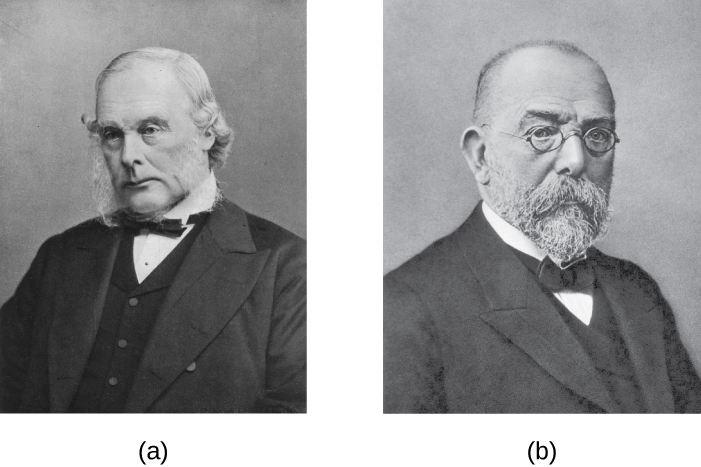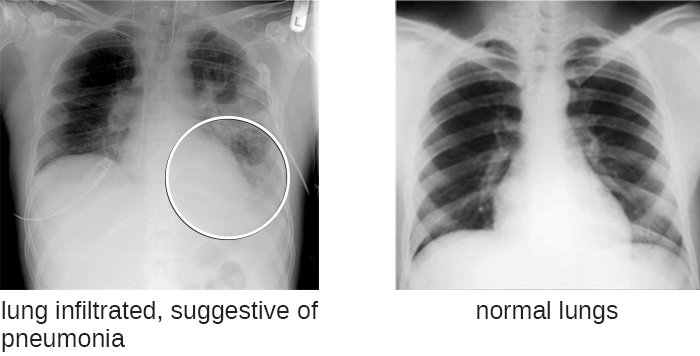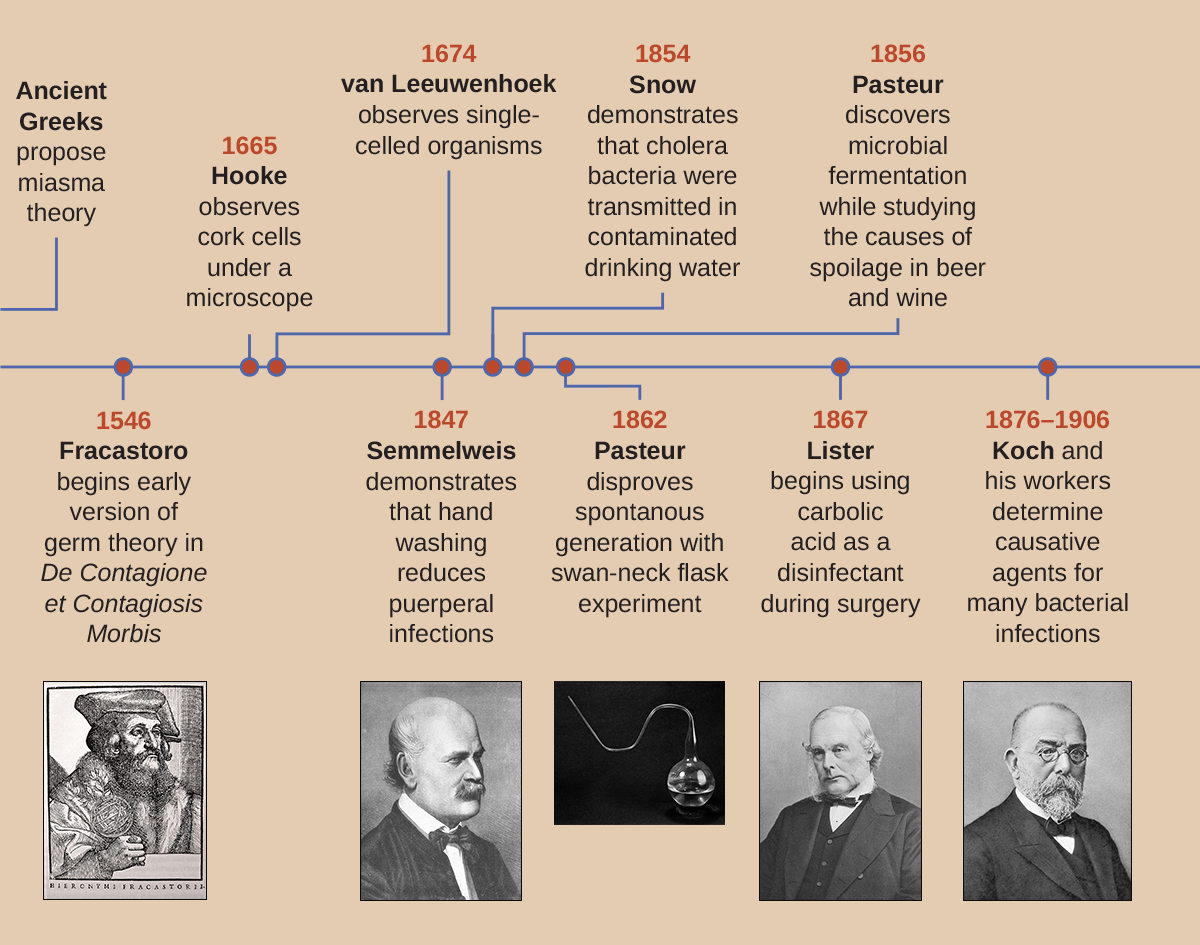| << Chapter < Page | Chapter >> Page > |
Meanwhile, British surgeon Joseph Lister ( [link] ) was trying to determine the causes of postsurgical infections. Many physicians did not give credence to the idea that microbes on their hands, on their clothes, or in the air could infect patients’ surgical wounds, despite the fact that 50% of surgical patients, on average, were dying of postsurgical infections. Alexander, J. Wesley. “The Contributions of Infection Control to a Century of Progress” Annals of Surgery 201:423-428, 1985. Lister, however, was familiar with the work of Semmelweis and Pasteur; therefore, he insisted on handwashing and extreme cleanliness during surgery. In 1867, to further decrease the incidence of postsurgical wound infections, Lister began using carbolic acid (phenol) spray disinfectant/antiseptic during surgery. His extremely successful efforts to reduce postsurgical infection caused his techniques to become a standard medical practice.
A few years later, Robert Koch ( [link] ) proposed a series of postulates (Koch’s postulates) based on the idea that the cause of a specific disease could be attributed to a specific microbe. Using these postulates, Koch and his colleagues were able to definitively identify the causative pathogens of specific diseases, including anthrax, tuberculosis, and cholera. Koch’s “one microbe, one disease” concept was the culmination of the 19th century’s paradigm shift away from miasma theory and toward the germ theory of disease. Koch’s postulates are discussed more thoroughly in How Pathogens Cause Disease .

After suffering a fever, congestion, cough, and increasing aches and pains for several days, Barbara suspects that she has a case of the flu. She decides to visit the health center at her university. The PA tells Barbara that her symptoms could be due to a range of diseases, such as influenza, bronchitis, pneumonia, or tuberculosis.
During her physical examination, the PA notes that Barbara’s heart rate is slightly elevated. Using a pulse oximeter, a small device that clips on her finger, he finds that Barbara has hypoxemia—a lower-than-normal level of oxygen in the blood. Using a stethoscope, the PA listens for abnormal sounds made by Barbara’s heart, lungs, and digestive system. As Barbara breathes, the PA hears a crackling sound and notes a slight shortness of breath. He collects a sputum sample, noting the greenish color of the mucus, and orders a chest radiograph, which shows a “shadow” in the left lung. All of these signs are suggestive of pneumonia , a condition in which the lungs fill with mucus ( [link] ).

Jump to the next Clinical Focus box. Go back to the previous Clinical Focus box.

John Snow is known as the Father of _____________.
epidemiology
The ____________ theory states that disease may originate from proximity to decomposing matter and is not due to person-to-person contact.
miasma
The scientist who first described cells was _____________.
Robert Hooke
How did the explanation of Virchow and Remak for the origin of cells differ from that of Schleiden and Schwann?
What evidence exists that supports the endosymbiotic theory?
What were the differences in mortality rates due to puerperal fever that Ignaz Semmelweis observed? How did he propose to reduce the occurrence of puerperal fever? Did it work?

Notification Switch
Would you like to follow the 'Microbiology' conversation and receive update notifications?